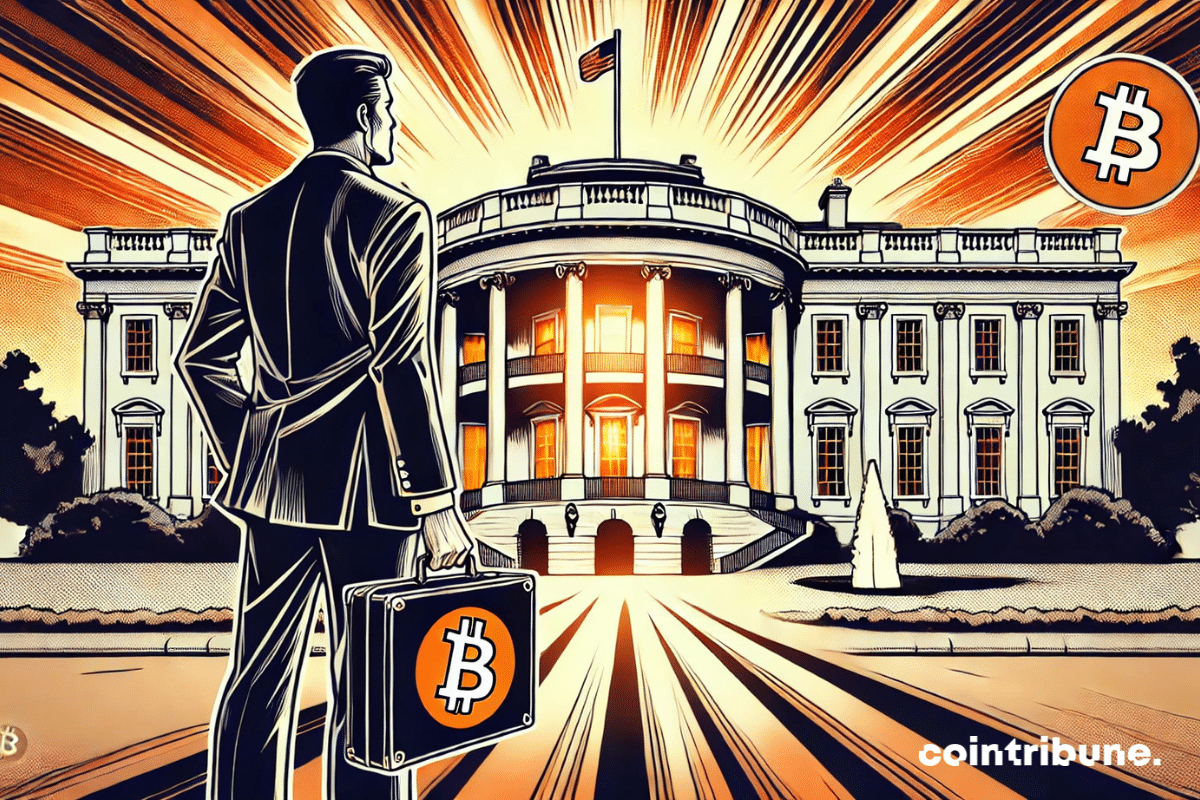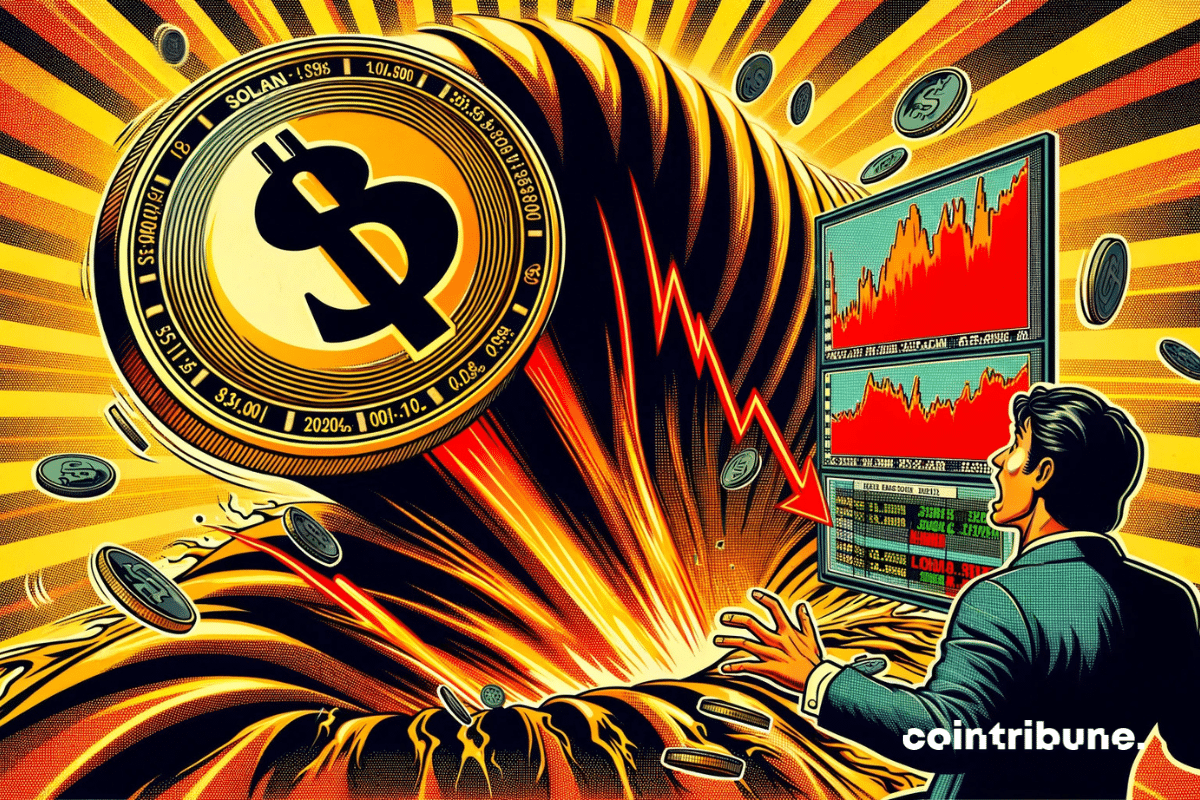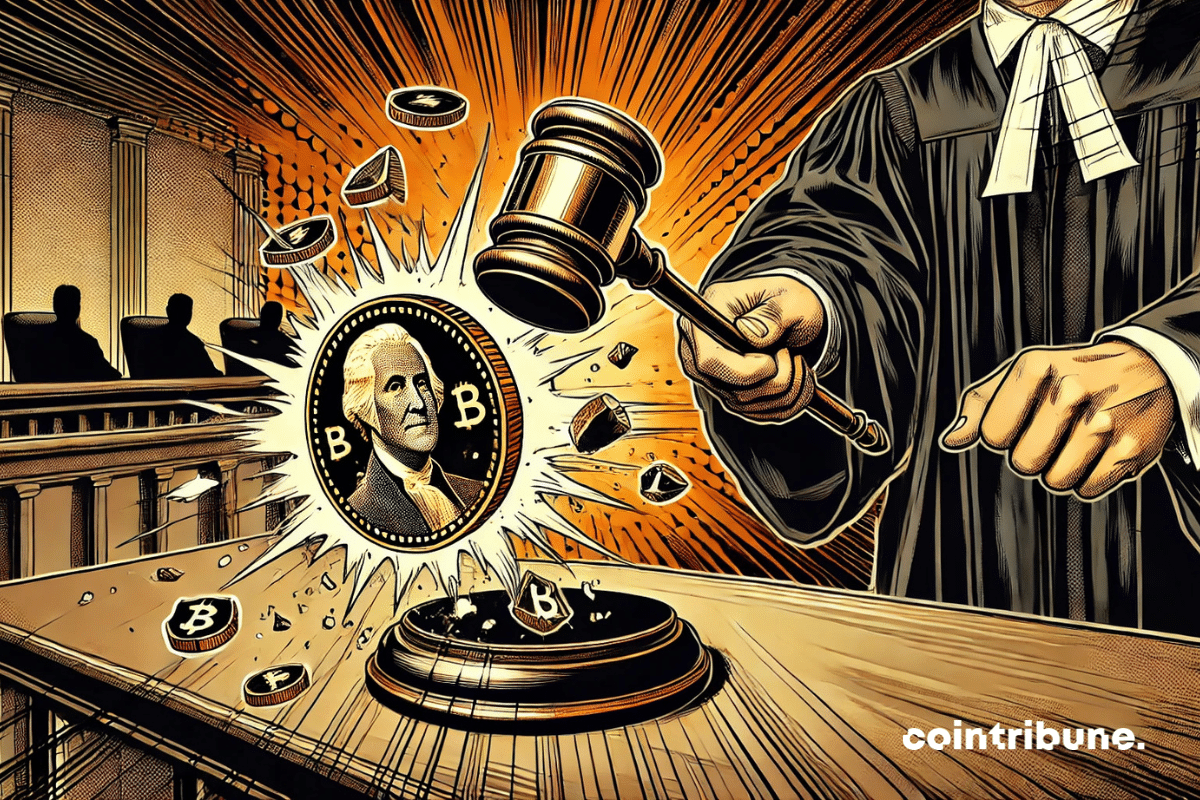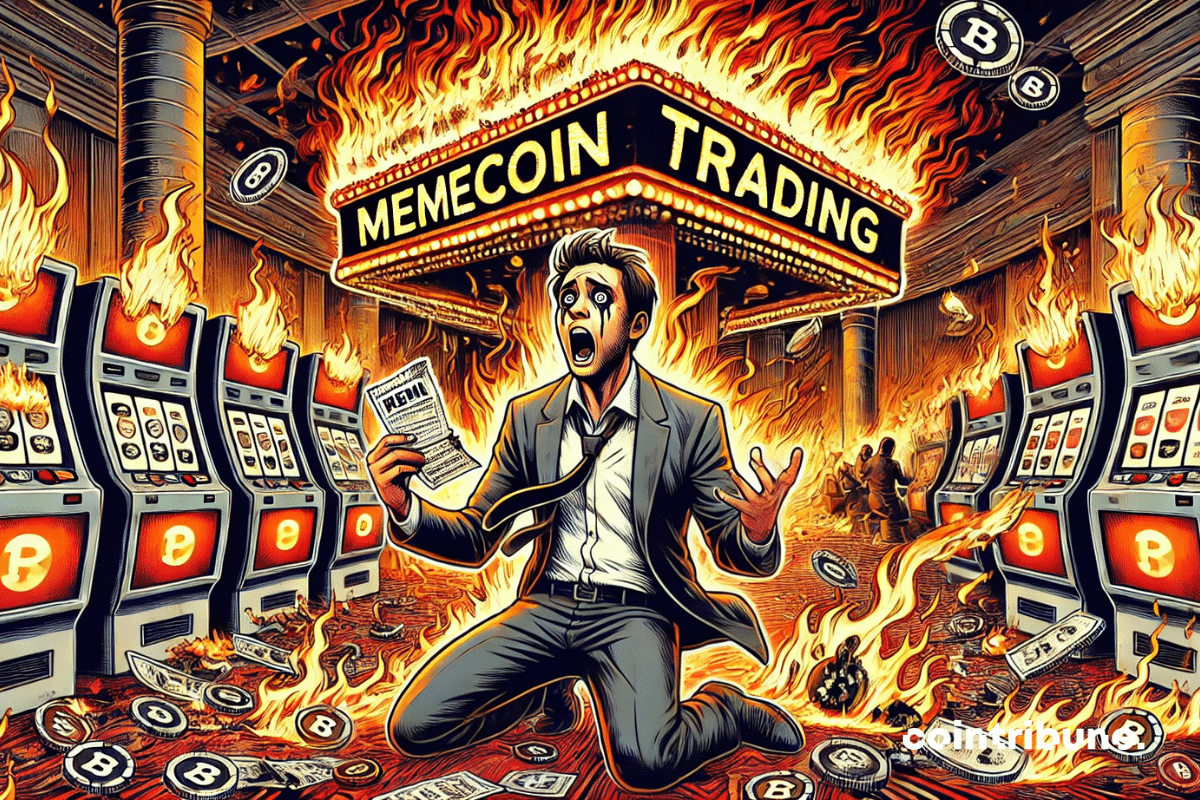Like a ship in the midst of a storm, Bitcoin sways, capsizes, and sees its passengers jumping into the water. Only the seasoned sailors remain on board, confident in the future clear-up.
Crypto News
Does bitcoin have a place in national reserves? For the Swiss National Bank, the answer is clear: no. Between excessive volatility and lack of liquidity, the SNB rejects the idea of integrating cryptocurrency into its balance sheet, despite pressure from bitcoin advocates.
The past few weeks have been tough for crypto investors. Indeed, they have been marked by a prolonged market downturn and a growing sense of distrust. Bitcoin, the engine of the sector, has nonetheless recorded a spectacular rebound. Thus, it surpassed $84,000 after having dropped to as low as $78,248. This turnaround raises an essential question: is this a true signal of recovery or just a brief surge before a new phase of turbulence? In the shadow of this rise, major altcoins like Ethereum (ETH), Solana (SOL), and XRP have experienced mixed performances. Some may take this opportunity to regain ground, while others remain under pressure.
The crypto market has just experienced one of its most violent downturns in months. After reaching an all-time high of $109,000 on January 20, Bitcoin plummeted by 28%. This drop wiped out billions of dollars in market capitalization in a matter of weeks. Such a brutal reversal comes amid an environment of economic tension and turmoil in the financial markets. But beyond a mere technical correction, several major events contributed to this decline. From macroeconomic fears, record cyberattacks, to political disillusionment, let's look back at the causes of this tumble and its implications.
The Bitcoin market has just experienced a brutal correction. In the span of 48 hours, a massive wave of capitulation has resulted in more than $2.16 billion in realized losses for investors. Behind this drop lies a well-known pattern for analysts: weak hands, often the most recent entrants, have liquidated their positions at a loss. Far from being trivial, this wave of hasty selling raises questions about market strength and investor psychology in the face of sudden corrections.
Solana is bonding like a cat escaping the downpour, but the storm of March 1st is approaching, ready to clip its wings.
Bitcoin's volatility is once again at the heart of discussions. While the cryptocurrency briefly fell below $79,000, Standard Chartered Bank believes that the correction could intensify, bringing BTC into a range between $69,000 and $76,500 by Monday. This projection is based on several market indicators, including the selling pressure from massive Bitcoin ETF outflows and the increase in short positions by hedge funds. Should this decline be viewed as a simple correction or a signal of a deeper reversal?
A collective of financial analysts specializing in cryptocurrencies has published a study suggesting that XRP could reach the staggering value of 18,000 dollars. This prediction, which sparks as much enthusiasm as skepticism within the crypto community, deserves a thorough examination.
The story rarely repeats itself, but it sometimes blinks. On March 7, the White House transforms its marble into an arena for an unprecedented duel: Trump’s America faces the crypto future. Amid regulatory theatrics and geopolitical calculations, this summit could sculpt the face of global finance. As trade tensions with…
The crypto market is buzzing. After a week marked by a sharp correction and intense selling pressure, bitcoin surged to $85,120, rekindling hope among investors and traders. However, this sudden rise is based on complex dynamics that raise questions about its sustainability. While some see it as a buying opportunity, others warn of a possible relapse if the trend does not hold. Thus, the clash between these two perspectives creates a palpable tension in the market.
The crypto market is shaking. Bitcoin shows a Fear & Greed index plunging to 10 — an unprecedented level of extreme fear since the winter of 2022. As traders hold their breath, a burning question arises: is this panic a deadly trap… or a disguised opportunity?
Crypto has just experienced the heist of the century. On February 21, Bybit, one of the giants of centralized exchanges, was siphoned off 1.4 billion dollars. But the real shock lies elsewhere: in just a week, hackers have already laundered 605 million dollars worth of Ether. Unprecedented. Behind this feat is a feared actor: the Lazarus group, the armed wing of North Korea. An unexpected tool at the heart of the scandal: THORChain, the interchain protocol beloved by degens.
The crypto market is going through a turbulent phase. Indeed, Ethereum (ETH), the second-largest cryptocurrency by market capitalization, has experienced a sharp decline of 20% in just three days, bringing its price to around $2,100. Such a sudden correction raises questions: is it merely a moment of volatility or a warning sign for investors? Between unfavorable macroeconomic factors and signs of resilience in the derivatives market, the future of ETH hangs in a fragile balance.
Bitcoin is going through an unstable period. Between spectacular rallies and dizzying falls, the queen of crypto shapes the mindset of investors with rare brutality. In recent days, the market has experienced an intense sequence marked by massive sell-offs on spot Bitcoin ETFs and growing pressure on futures contracts. This phenomenon is anything but trivial. It illustrates a lasting climate of doubt, where the extreme volatility of BTC drives some to give up while others seek opportunities.
The crypto market is undergoing a new phase of turbulence. Solana (SOL) has fallen by 41% in just a few weeks. This decline is not just a simple market correction: it highlights structural vulnerabilities and a high dependence on certain speculative trends.
American Democrats are launching an unprecedented offensive against memecoins linked to political figures. California Representative Sam Liccardo is preparing the MEME Act, aiming to ban politicians from issuing or promoting digital assets. This initiative comes after the spectacular collapse of the TRUMP and MELANIA tokens, which have caused billions in losses for crypto investors.
Amidst sordid scandals, Pump.fun devalues by 80% in February. The excitement of memecoins fades under the weight of disappointment, while confidence collapses inexorably.
The FBI is calling on node operators and exchange platforms to block transactions related to the record hack of Bybit. The U.S. federal agency confirms the involvement of the North Korean Lazarus group in this theft of $1.4 billion and is taking steps to prevent the laundering of the funds.
Spoofy and Metaplanet are buying Bitcoin on the dip: Genius strategy or manipulation? Full analysis in this article.
Bitcoin is currently undergoing a significant correction, falling below the $86,000 mark. This comes amidst economic turmoil triggered by the announcement of new tariffs by U.S. President Donald Trump. This drop marks a turning point for the cryptocurrency market, which has been facing increasing pressure in recent days. The future of BTC is now more uncertain than ever.
Oklahoma, a pioneer of the Bitcoin revolution, has taken a crucial step by validating its strategic reserve project. However, the enthusiasm is far from being shared by all states. A new war begins.
The Avalanche Foundation, in collaboration with Rain, has just announced the launch of the Avalanche Card this Wednesday. This new card will allow users to spend their cryptocurrencies wherever Visa is accepted, with initial support for USDC, USDT, AVAX, and wAVAX.
Hamster Kombat has just unveiled its season 2 with the promise of being "more than just a game," simultaneously launching Hamster Network, its own layer 2 blockchain on The Open Network (TON). This strategic initiative aims to transform the gaming experience into a true decentralized entertainment ecosystem, as the project seeks to win back its users after a challenging period.
The crypto scene has just experienced a new episode of turbulence: Bitcoin has dropped to $83,400, its lowest level since November 2024. This sudden correction triggered over a billion dollars in liquidations in the derivatives market. Such a situation has shaken investor confidence. Behind this decline, a convergence of macroeconomic and financial factors weighed on the asset, at a time when the strength of Bitcoin ETFs and the influence of Strategy on the market are being called into question.
The T-REX 2X Long MSTR Daily Target ETF, linked to Strategy (formerly MicroStrategy), has fallen 81% since its peak in November 2024, losing 40% in three days, according to recent data. This plunge, amplified by bitcoin's volatility, highlights the risks of leveraged ETFs.
Bitcoin is experiencing a significant new correction, dropping to $85,760 after reaching an all-time high of $101,000 in January 2025. This 16% decline echoes a surprising prediction by Changpeng Zhao (CZ), founder of Binance, who had anticipated this scenario since December 2020.
As Bitcoin struggles to maintain its credibility in the face of distressed investors, the crypto market as a whole plunges into a worrisome spiral. The total capitalization reaches an unprecedented level since November 2021, revealing a multifaceted crisis.
In light of the recent drop in the crypto market, Richard Teng, CEO of Binance, shows measured optimism. In an analysis published on February 25, he describes this decline as a mere "tactical retreat" rather than a fundamental shift in trend, reminding of the historical resilience of the sector.
The memecoin market has exploded in recent months, especially thanks to Pump.fun, a platform that has facilitated the creation and launch of tokens. After an initial enthusiasm and massive adoption, new challenges have emerged, including market saturation and the use of manipulation tactics by some developers. PumpRush.fun addresses these issues by launching its version 1 (V1), a powerful tool that offers complete transparency on transactions and tokens.
The Bitcoin exchange-traded fund (ETF) market continues to experience a significant wave of capital outflows. According to recent data, the 11 Bitcoin ETFs recorded a net outflow of $937.9 million on February 25, 2025, marking their sixth consecutive day of losses. This is a concerning situation according to experts.





























